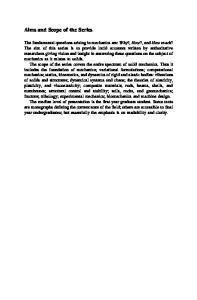Travelling Waves in Reaction Diffusion Systems with Weak Diffusion: Analytical Techniques and Results
Although the wave phenomena we discuss in this chapter are mathematically interesting in their own right, they have been observed experimentally with Belousov-Zhabotinskii reactions by Marek and Svobodová (1975): the experimental results are the motivatio
- PDF / 74,177,929 Bytes
- 783 Pages / 481.89 x 691.654 pts Page_size
- 28 Downloads / 221 Views
Managing Editor S.A.Levin
Editorial Board C. DeLisi M. Feldman J. Keller R. M. May 1. D. Murray A. Perelson L. A. Segel
ID.Murray
Mathematical Biology Second, Corrected Edition With 292 Figures
Springer-Verlag Berlin Heidelberg GmbH
James D. Murray, FRS Applied Mathematics FS-20 University of Washington Seattle, WA 98195, USA
Cover picture: A model based on a system of reaction-diffusion equations has been suggested by the author of this book to explain how the coat markings on the leopard and other mammals are generated. In this book, he gives a whole range of animal patterning examples - from the stripes on the zebra to the eyespots on the wings of butterflies - to demonstrate the wide applicability of such models.
Mathematics Subject Classification (1980): 34C, 34D, 35B, 35K, 92A06 92A08, 92AI2, 92AI5, 92A17, 92A90
ISBN 978-3-540-57204-6 ISBN 978-3-662-08542-4 (eBook) DOI 10.1007/978-3-662-08542-4 This work is subject to copyright. All rights are reserved, whether the whole or part of the material is concerned, specifically the rights of translation, reprinting, reuse of illustrations, recitation, broadcasting, reproduction on nticro-film or in any other way, and storage in data banks. Duplication of this publication or parts thereof is perntitted only under the provisions of the German Copyright Law of September 9, 1965, in its current version, and permission for use must always be obtained from Springer-Verlag Berlin Heidelberg GmbH. Violations are liable for prosecution under the German Copyright Law. © Springer-Verlag Berlin Heidelberg 1989, 1993
Originally published by Springer-Verlag Berlin Heidelberg New York in 1993 Media conversion: EDV-Beratung Mattes, Heidelberg 41/3140 - 5432 10 Printed on acid-free paper
Preface to the First Edition
Mathematics has always benefited from its involvement with developing sciences. Each successive interaction revitalises and enhances the field. Biomedical science is clearly the premier science of the foreseeable future. For the continuing health of their subject mathematicians must become involved with biology. With the example of how mathematics has benefited from and influenced physics, it is clear that if mathematicians do not become involved in the biosciences they will simply not be a part of what are likely to be the most important and exciting scientific discoveries of all time. Mathematical biology is a fast growing, well recognised, albeit not clearly defined, subject and is, to my mind, the most exciting modern application of mathematics. The increasing use of mathematics in biology is inevitable as biology becomes more quantitative. The complexity of the biological sciences makes interdisciplinary involvement essential. For the mathematician, biology opens up new and exciting branches while for the biologist mathematical modelling offers another research tool commmensurate with a new powerful laboratory technique but only if used appropriately and its limitations recognised. However, the use of esoteric mathematics arrogantly applied to biologic










